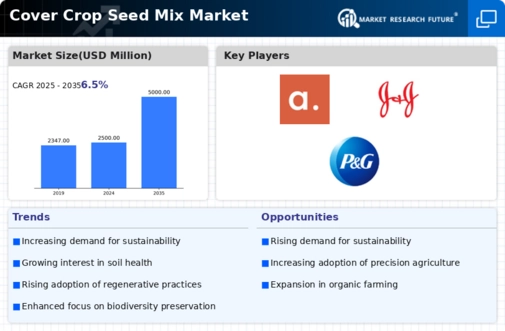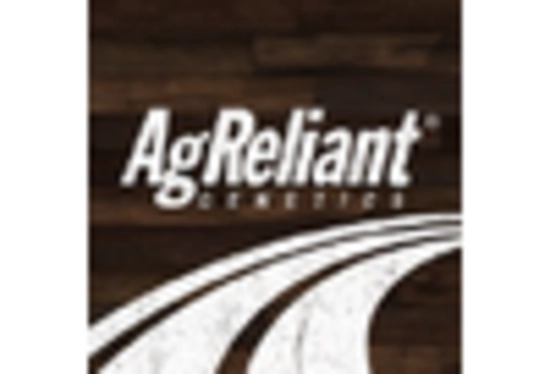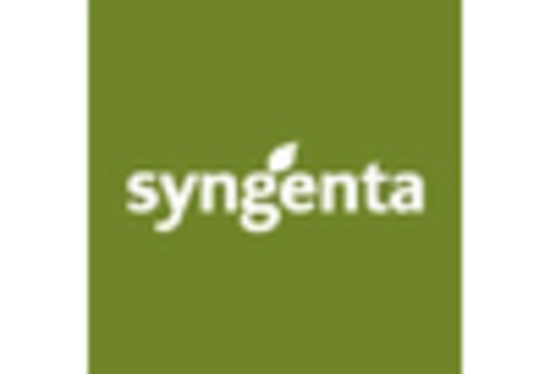Economic Incentives
Economic factors are pivotal in shaping the Cover Crop Seed Mix Market. Farmers are increasingly motivated by financial incentives associated with cover crop adoption. Programs that offer subsidies or cost-sharing for cover crop implementation can significantly lower the financial barriers for farmers. For instance, some regions report that farmers can save up to 50% on fertilizer costs by utilizing cover crops, which can lead to a more profitable farming operation. This economic viability encourages more farmers to invest in cover crop seed mixes, thereby stimulating growth in the Cover Crop Seed Mix Market. As these economic incentives become more widespread, the market is likely to expand.
Environmental Benefits
The Cover Crop Seed Mix Market is increasingly driven by the growing awareness of environmental sustainability. Cover crops play a crucial role in enhancing soil health, reducing erosion, and improving water quality. They contribute to carbon sequestration, which is vital in combating climate change. According to recent studies, cover crops can reduce nitrogen leaching by up to 30%, thereby improving water quality in surrounding ecosystems. This environmental focus aligns with regulatory frameworks that encourage sustainable agricultural practices. As farmers seek to comply with these regulations, the demand for cover crop seed mixes is likely to rise, indicating a robust growth trajectory for the Cover Crop Seed Mix Market.
Soil Health Improvement
The Cover Crop Seed Mix Market is significantly influenced by the increasing emphasis on soil health. Farmers are recognizing that healthy soil is foundational for sustainable agriculture. Cover crops enhance soil structure, increase organic matter, and promote beneficial microbial activity. Research indicates that the use of cover crops can lead to a 10-20% increase in soil organic carbon levels. This improvement not only boosts crop yields but also enhances resilience against pests and diseases. As agricultural practices evolve, the demand for diverse cover crop seed mixes that cater to specific soil health needs is expected to grow, further propelling the Cover Crop Seed Mix Market.
Technological Innovations
Technological advancements are reshaping the Cover Crop Seed Mix Market. Innovations in seed technology, such as improved germination rates and disease resistance, are making cover crops more appealing to farmers. Precision agriculture tools enable farmers to select the most suitable cover crop mixes based on specific field conditions, enhancing the effectiveness of cover crops. Furthermore, data analytics can provide insights into the optimal timing and management practices for cover crops. As these technologies become more accessible, they are expected to drive the adoption of cover crop seed mixes, thereby fostering growth in the Cover Crop Seed Mix Market.
Consumer Demand for Sustainable Products
The Cover Crop Seed Mix Market is also influenced by the rising consumer demand for sustainably produced food. As consumers become more environmentally conscious, they are increasingly seeking products that are grown using sustainable practices. This trend is prompting farmers to adopt cover crops as a means to enhance sustainability in their operations. Studies suggest that farms utilizing cover crops can market their products as more environmentally friendly, potentially commanding higher prices. This shift in consumer preferences is likely to encourage more farmers to invest in cover crop seed mixes, thereby driving growth in the Cover Crop Seed Mix Market.


















Leave a Comment